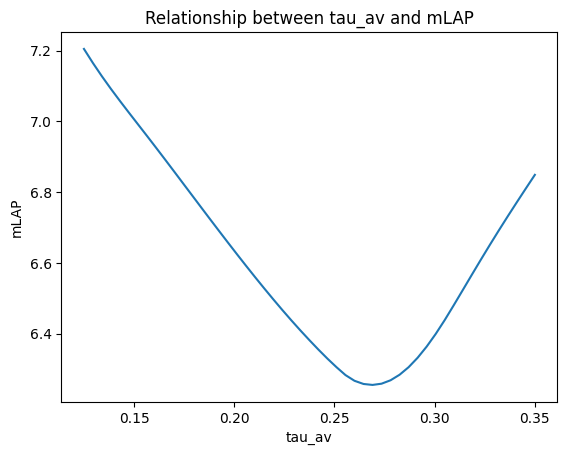Timings module
The Timings module controls the contraction of a physiological heart beat. It assumes homogeneous contraction within a Wall segment, even when more Patch objects are simulated within a single Wall segment. The Timings module does control the atrial-ventricular delay and heartrate-dependent parameters.
Lets create the model.
import circadapt
import matplotlib.pyplot as plt
import numpy as np
model = circadapt.VanOsta2024()
Model implementation
When using the Timings module, each connected Wall will be triggered once during the cycle. By this defenition, the cycle time of the model t_cycle is equal to 60 / t_cycle. We will simulate a heart rate of 75 bpm. In this tutorial, we will turn pressure-flow regulation off.
model['General']['t_cycle'] = 60 / 75
model['PFC']['is_active'] = False
AV-delay
The atrio-ventricular (AV) delay is controlled by the Timings module. By default, when law_tau_av==1, the AV-delay is set to tau_av = c_tau_av1 * t_cycle + c_tau_av0 + dtau_av. Alternatively, when law_tau_av==2, the AV-delay is set to tau_av = c_tau_av1 / t_cycle + c_tau_av0 + dtau_av. When law_tau_av==0, the AV-delay is not controlled meaning tau_av is a input parameter.
To investigate the effect of different AV-delays on mean left atrial pressure, you can turn off the AV-delay control.
model['Timings']['law_tau_av'] = 0
tau_avs = np.linspace(0.125, 0.35, 51)
mLAP = np.empty_like(tau_avs)
for i, tau_av in enumerate(tau_avs):
model['Timings']['tau_av'] = tau_av
model.run(stable=True)
mLAP[i] = np.mean(model['Cavity']['p'][:, 'La']) / 133
Now, we can plot this relationship:
plt.plot(tau_avs, mLAP)
plt.xlabel("tau_av")
plt.ylabel("mLAP")
plt.title("Relationship between tau_av and mLAP")
Text(0.5, 1.0, 'Relationship between tau_av and mLAP')

Different AV-delay relationships
In studies with varying t_cycle, changing the AV-delay relationship can be of interest. In this example, we will plot the mLAP - CO relationship for various AV-delay relationships.
c_tau_av1s = np.linspace(0.1, 0.2, 6)
COs = np.linspace(5, 15, 6)
mLAP = np.empty((*c_tau_av1s.shape, *COs.shape))
for i, c_tau_av1 in enumerate(c_tau_av1s):
for j, CO in enumerate(COs):
model = circadapt.VanOsta2024()
model['Timings']['law_tau_av'] = 1
model['Timings']['c_tau_av1'] = c_tau_av1
model['PFC']['is_active'] = True
model['PFC']['q0'] = CO / 60e3
model['General']['t_cycle'] = 1/3 * 0.85 + 2/3 * 0.85 / (CO / 5)
try:
model.run(stable=True)
mLAP[i, j] = np.mean(model['Cavity']['p'][:, 'La']) / 133
except circadapt.error.ModelCrashed:
mLAP[i, j] = np.nan
plt.plot(COs, mLAP.T, label=c_tau_av1s)
plt.legend()
plt.xlabel("CO")
plt.ylabel("mLAP")
plt.title("Relationship between CO and as function of c_tau_av1")
Text(0.5, 1.0, 'Relationship between CO and as function of c_tau_av1')

Relative contraction duration
Besides moment of contraction, also duration of contraction is scaled using the Timings module. The Timings module controls the time_act parameter of the Patch module. With law_ta == 0 and law_tv == 0, no t_cycle dependency is simulated. By default, law_ta = 1 and law_tv = 1, simulating the relative contraction duration by ta = (c_ta_rest * t_cycle_rest + c_ta_tcycle * t_cycle) * time_fac and tv = (c_tv_rest * t_cycle_rest + c_tv_tcycle * t_cycle) * time_fac.